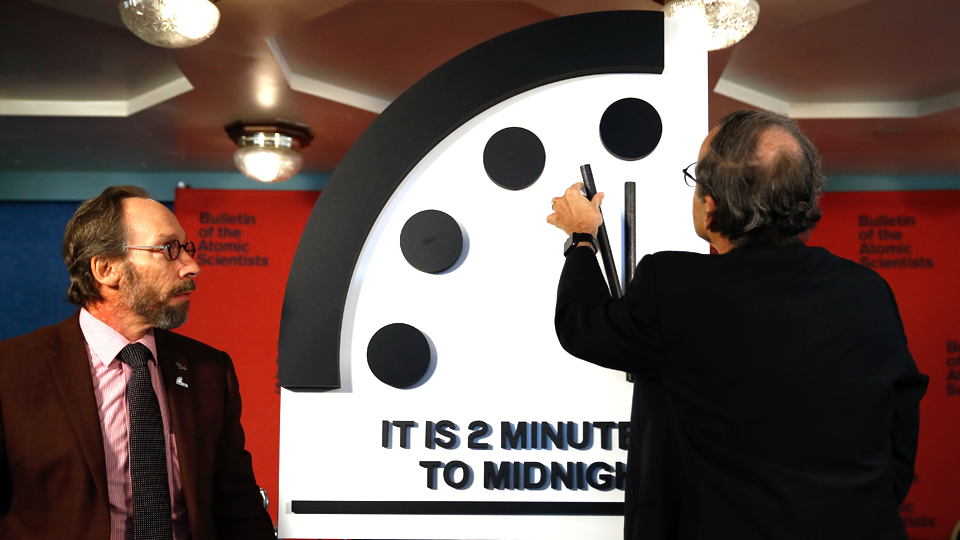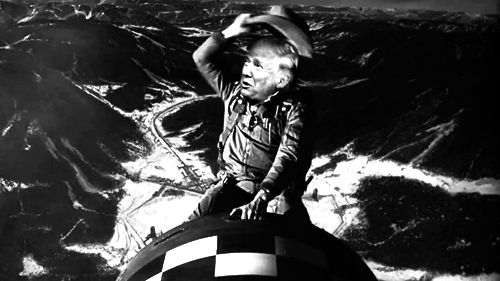
With the new Nuclear Posture Review (NPR) it released Feb. 2, the Trump administration is revealing its plans to significantly upgrade the U.S. nuclear weapons arsenal, develop new types of smaller-yield weapons, more closely integrate nuclear and conventional war-fighting capabilities, and expand the circumstances under which nuclear arms might actually be used.
Despite the NPR’s repeated claims that these moves are “not intended” to “enable nuclear war fighting,” analysts from a broad range of arms control and disarmament organizations are pointing out that the measures are unnecessary, enormously expensive, and greatly increase the possibility of a devastating nuclear war.
The new NPR states that the U.S. “will maintain the range of flexible nuclear capacities needed to ensure that nuclear or non-nuclear aggression against the United States, allies, and partners will fail to achieve its objectives and carry with it the credible risk of intolerable consequences for potential adversaries now and in the future.”
The new plan would also “strengthen the integration of nuclear and non-nuclear military planning.”
Besides the current nuclear triad—submarine-launched missiles, land-based intercontinental missiles, and bombers—two new nuclear-armed weapons would be developed: a submarine-launched cruise missile and a “tactical” low-yield submarine-launched ballistic missile.
The NPR also makes resumption of nuclear weapons tests more likely. The U.S. signed, but never ratified, the Comprehensive Test Ban Treaty (CTBT) when it was opened for signature in 1996. The new NPR explicitly states that Washington will not seek to ratify the CTBT.
The NPR would also reverse over four decades of efforts by both Republican- and Democrat-led administrations which have cut the U.S. nuclear arsenal from over 30,000 weapons to about 4,000, of which 1,550 are operable.
It is estimated that over the next two decades, carrying out Trump’s NPR would double the portion of the military budget earmarked for nuclear weapons, with costs rising by up to $50 billion annually.
Congressional approval of such spending will be essential.
In a Feb. 2 commentary for The Bulletin of the Atomic Scientists, Lawrence Korb, a senior fellow at the Center for American Progress, (and in the 1980s, an Assistant Secretary of Defense for Manpower in Ronald Reagan’s administration), noted that many U.S. military officials see development of low-yield weapons as a potential “gateway drug” for nuclear war.
“Adding a nuclear cruise missile to the inventory,” he said, “means that the Russians would have to assume that any cruise missile is in fact a nuclear weapon.”
Korb also pointed out that “such new weapons undermine the Nuclear Non-Proliferation Treaty, Article VI of which obligates its signatories to take steps to nuclear disarmament.” The U.S. ratified the treaty in 1970. The new document completely omits any reference to Article VI.
In another commentary published the same day, the Union of Concerned Scientists’ co-director and senior scientist Lisbeth Gronlund cited the NPR’s wide-ranging list of non-nuclear aggressions by others that could lead to U.S. first-use of nukes. Among them: “attacks on the U.S. allied or partner civilian population or infrastructure, and attacks on U.S. or allied nuclear forces, their command and control, or warning and attack assessment capabilities.”
Gronlund pointed to the disconnect between the new U.S. position, and the NPR’s admonition to Russia that nuclear first-use on any level “will fail to meet its objectives, fundamentally alter the nature of a conflict, and trigger incalculable and intolerable costs for Moscow.”
Lawrence Korb also pointed out that the NPR “overestimates the extent to which our geopolitical rivals are expanding their arsenals.” He cited Trump’s rejection of Russian President Vladimir Putin’s offer to extend the 2010 New START treaty committing both countries to significantly cut their nuclear arsenals. Korb also noted that China has “only some 60 intercontinental missiles, capable of carrying some 300 warheads.”
Calling the “world security situation… as dangerous as it has been since World War II,” The Bulletin of the Atomic Scientists’ Science and Security Board on Jan. 25 moved its Doomsday Clock 30 seconds closer to midnight. It said the new setting, at two minutes to midnight, is “the closest the Clock has ever been to Doomsday, and as close as it was in 1953, at the height of the Cold War.”

Showing just how much the world’s other nations are concerned over the present nuclear weapons situation, in July, 122 United Nations member countries voted to approve the new UN Treaty on the Prohibition of Nuclear Weapons, which would ban developing, testing, producing, manufacturing, transferring, possessing, stockpiling, using, or threatening to use nuclear weapons. One country opposed the treaty, one abstained, and others including the nine nuclear-armed countries boycotted the talks and did not sign.
As the treaty’s initiating organization, the International Campaign to Abolish Nuclear Weapons, was awarded this year’s Nobel Peace Prize. ICAN’s Executive Director, Beatrice Fihn, called the treaty “a choice between the two endings: the end of nuclear weapons or the end of us.”
After the release of the new NPR, Peace Action’s Paul Kawika Martin wondered, “Who in their right mind thinks it’s a good idea to make nuclear weapons ‘more usable?’ … Who let Dr. Strangelove write the Nuclear Posture Review?










